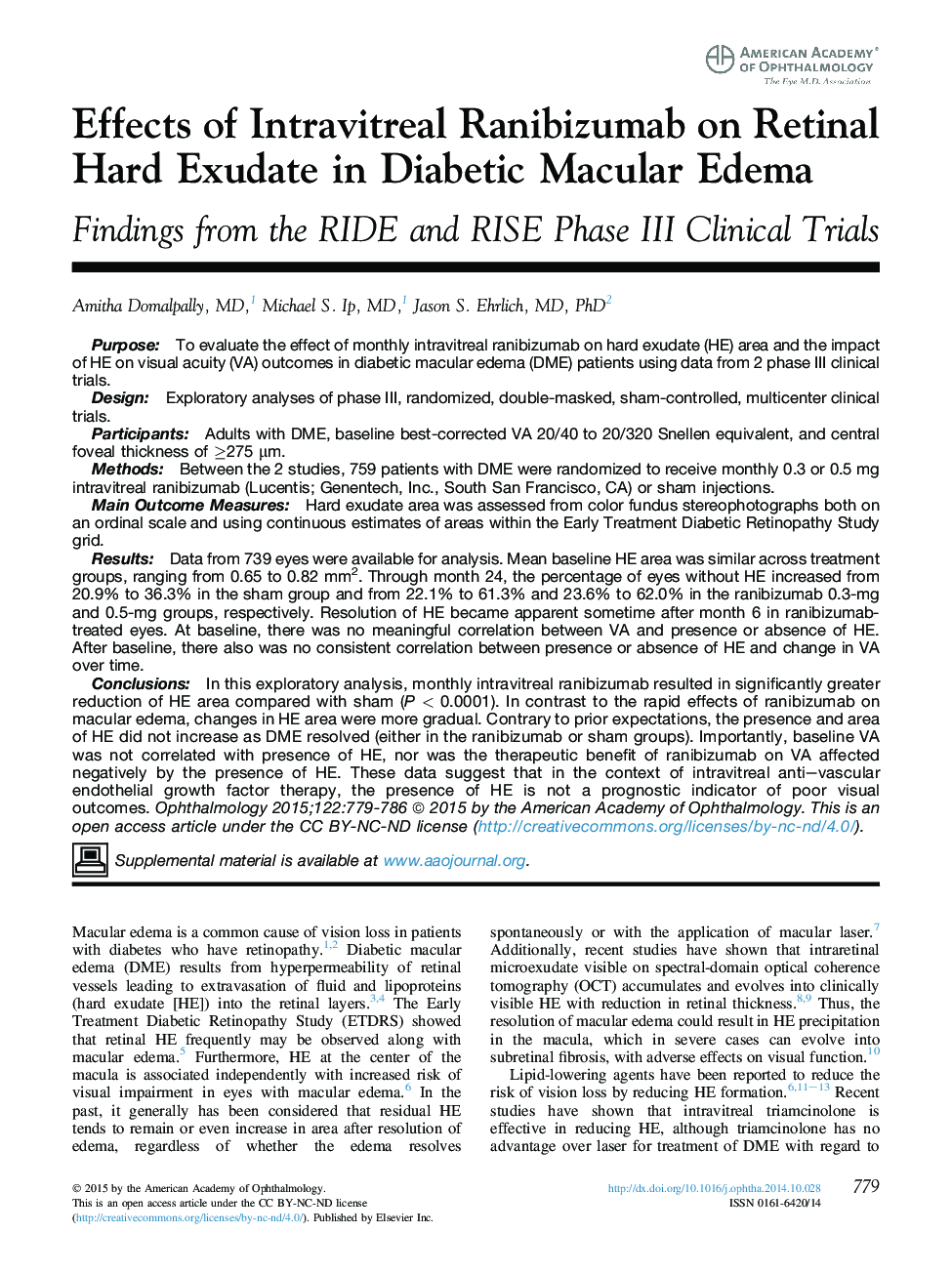| Article ID | Journal | Published Year | Pages | File Type |
|---|---|---|---|---|
| 6201196 | Ophthalmology | 2015 | 8 Pages |
PurposeTo evaluate the effect of monthly intravitreal ranibizumab on hard exudate (HE) area and the impact of HE on visual acuity (VA) outcomes in diabetic macular edema (DME) patients using data from 2 phase III clinical trials.DesignExploratory analyses of phase III, randomized, double-masked, sham-controlled, multicenter clinical trials.ParticipantsAdults with DME, baseline best-corrected VA 20/40 to 20/320 Snellen equivalent, and central foveal thickness of â¥275 μm.MethodsBetween the 2 studies, 759 patients with DME were randomized to receive monthly 0.3 or 0.5 mg intravitreal ranibizumab (Lucentis; Genentech, Inc., South San Francisco, CA) or sham injections.Main Outcome MeasuresHard exudate area was assessed from color fundus stereophotographs both on an ordinal scale and using continuous estimates of areas within the Early Treatment Diabetic Retinopathy Study grid.ResultsData from 739 eyes were available for analysis. Mean baseline HE area was similar across treatment groups, ranging from 0.65 to 0.82 mm2. Through month 24, the percentage of eyes without HE increased from 20.9% to 36.3% in the sham group and from 22.1% to 61.3% and 23.6% to 62.0% in the ranibizumab 0.3-mg and 0.5-mg groups, respectively. Resolution of HE became apparent sometime after month 6 in ranibizumab-treated eyes. At baseline, there was no meaningful correlation between VA and presence or absence of HE. After baseline, there also was no consistent correlation between presence or absence of HE and change in VA over time.ConclusionsIn this exploratory analysis, monthly intravitreal ranibizumab resulted in significantly greater reduction of HE area compared with sham (P < 0.0001). In contrast to the rapid effects of ranibizumab on macular edema, changes in HE area were more gradual. Contrary to prior expectations, the presence and area of HE did not increase as DME resolved (either in the ranibizumab or sham groups). Importantly, baseline VA was not correlated with presence of HE, nor was the therapeutic benefit of ranibizumab on VA affected negatively by the presence of HE. These data suggest that in the context of intravitreal anti-vascular endothelial growth factor therapy, the presence of HE is not a prognostic indicator of poor visual outcomes.
